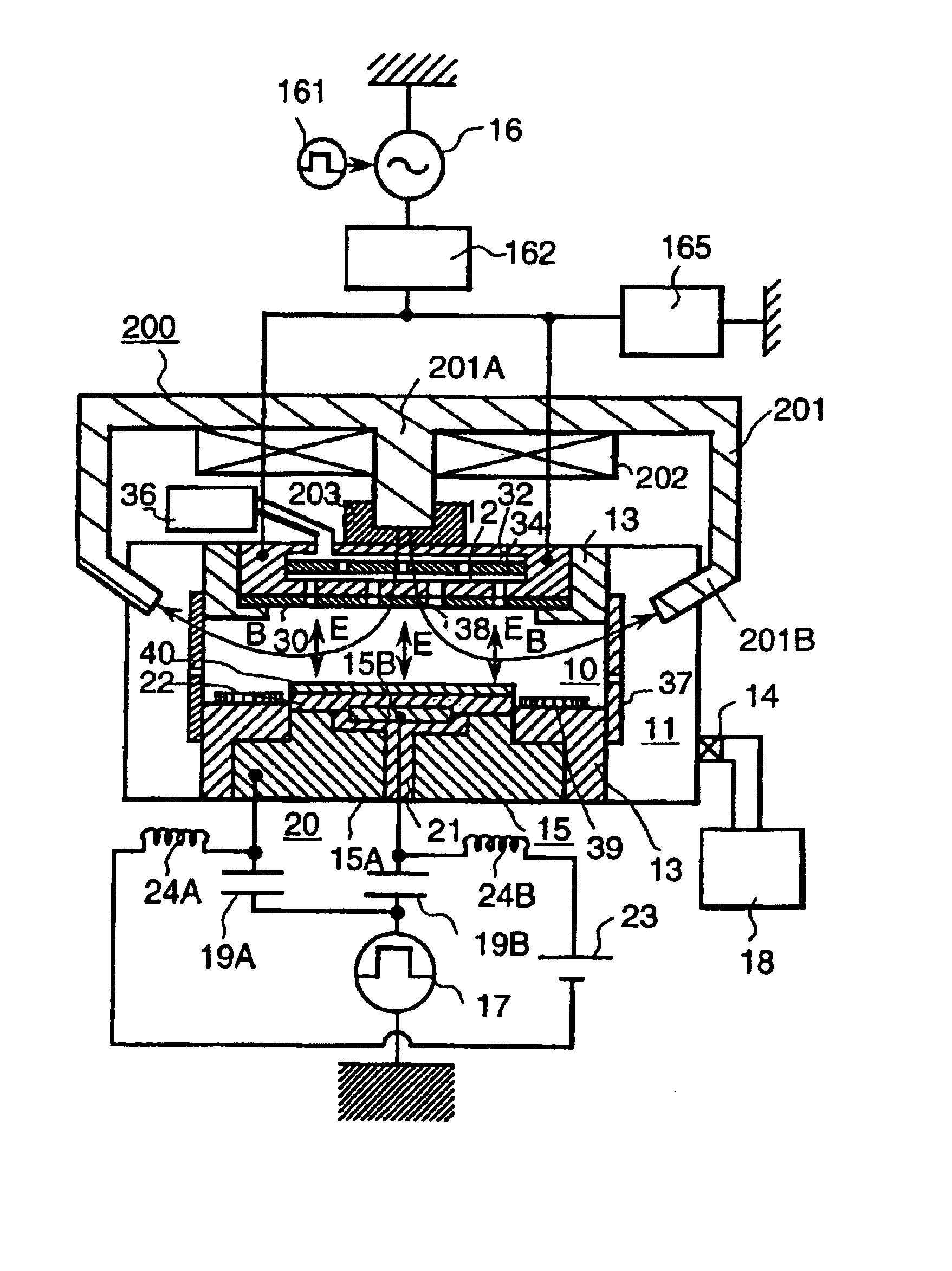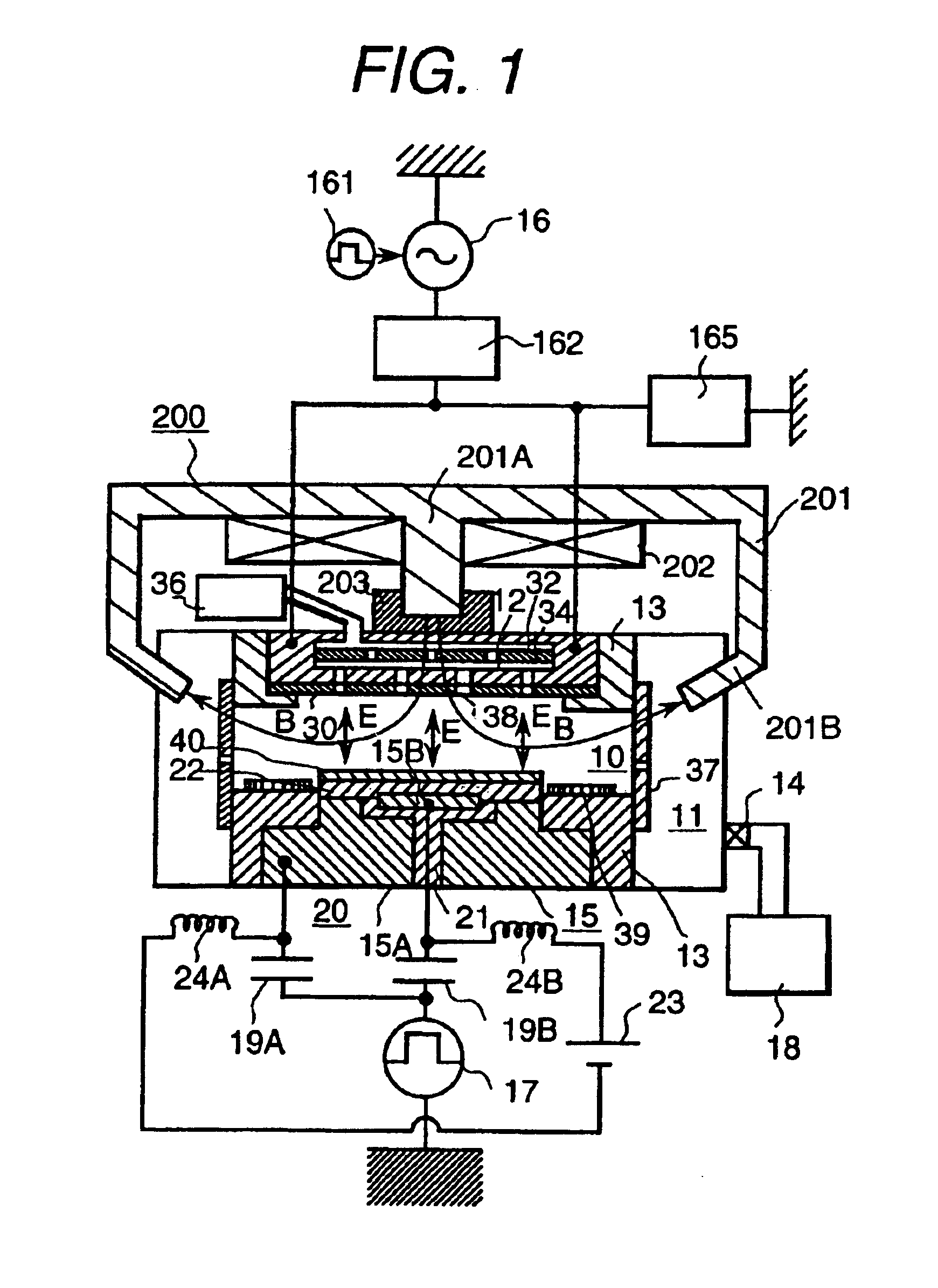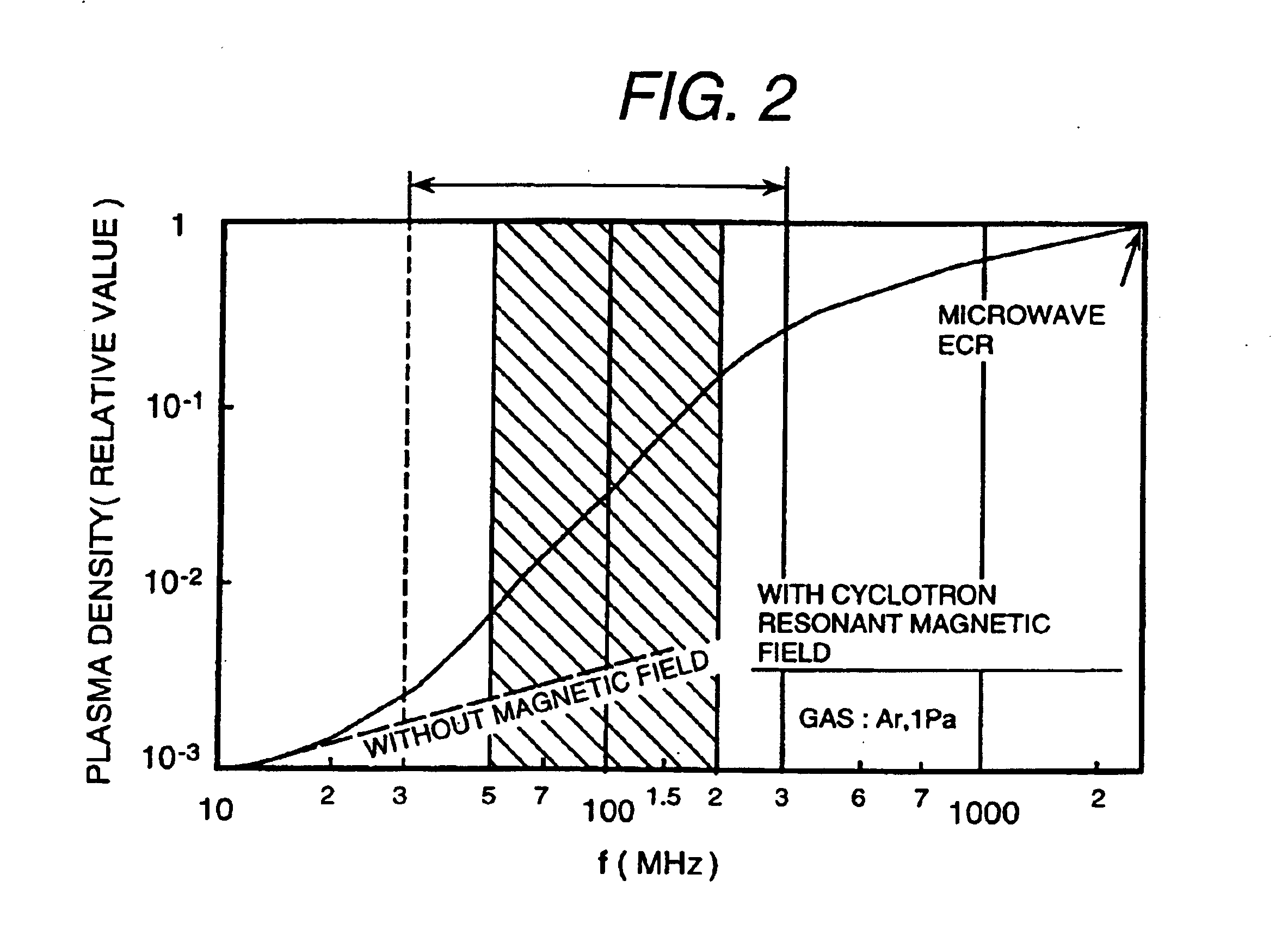Plasma processing apparatus and plasma processing method
a plasma processing and plasma technology, applied in electrical equipment, electrical discharge tubes, decorative arts, etc., can solve the problems of difficult difficult to increase the selectivity of an oxide film to a base material, difficult to stably discharge under a pressure condition below 10 pa, etc., to improve the selectivity of plasma processing, and control the temperature of the sample.
- Summary
- Abstract
- Description
- Claims
- Application Information
AI Technical Summary
Benefits of technology
Problems solved by technology
Method used
Image
Examples
Embodiment Construction
[0098]Embodiments of the present invention will be described below. FIG. 1 shows a first embodiment of a plasma etching apparatus using opposed electrodes to which the present invention is applied.
[0099]Referring to FIG. 1, a processing chamber 10 of a vacuum container has a pair of opposed electrodes composed of an upper electrode 12 and a lower electrode 15. On the lower electrode 15 a sample 40 is mounted. The distance of a gap between the electrodes 12 and 15 is preferably not smaller than 30 mm in order to suppress a pressure difference on the sample to within 10% when the sample has a large diameter of about 300 mm or larger. In order to decrease amounts of fluorine atoms, molecules and ions, the distance is desired to be not larger than 100 mm, preferably, not larger than 60 mm from the view point of effectively using a reaction product on the surfaces of the upper and the lower electrodes. A high frequency electric power source 16 for supplying a high frequency energy is con...
PUM
| Property | Measurement | Unit |
|---|---|---|
| diameter | aaaaa | aaaaa |
| frequency | aaaaa | aaaaa |
| magnetic field | aaaaa | aaaaa |
Abstract
Description
Claims
Application Information
 Login to View More
Login to View More - R&D
- Intellectual Property
- Life Sciences
- Materials
- Tech Scout
- Unparalleled Data Quality
- Higher Quality Content
- 60% Fewer Hallucinations
Browse by: Latest US Patents, China's latest patents, Technical Efficacy Thesaurus, Application Domain, Technology Topic, Popular Technical Reports.
© 2025 PatSnap. All rights reserved.Legal|Privacy policy|Modern Slavery Act Transparency Statement|Sitemap|About US| Contact US: help@patsnap.com



